Would you like to know if chainsaw chains come sharpened and with the chain? Well, we have researched this topic and have answers for you. It's vital to understand whether chainsaw chains come sharpened and with the chain to know whether you can use it right out of the box.
Chainsaw chains come sharpened whether you buy a chainsaw or a replacement chain. New chainsaws also come with a chain, and most have a spare chain.
In this article, we will learn if chainsaw chains come sharpened and with the chain. We will also learn the answers to other interesting related questions, such as how often should you sharpen a chainsaw's chain, and why do chainsaws need to be sharpened so often? Keep reading to learn more.

Do Chainsaw Chains Come Sharpened And With The Chain?
When you buy a new chainsaw chain, it will always come sharpened. The same is true about the chain if you purchase a new chainsaw. While a chain sharpened from the factory won't be as sharp as if hand sharpened, it'll still cut smoothly.
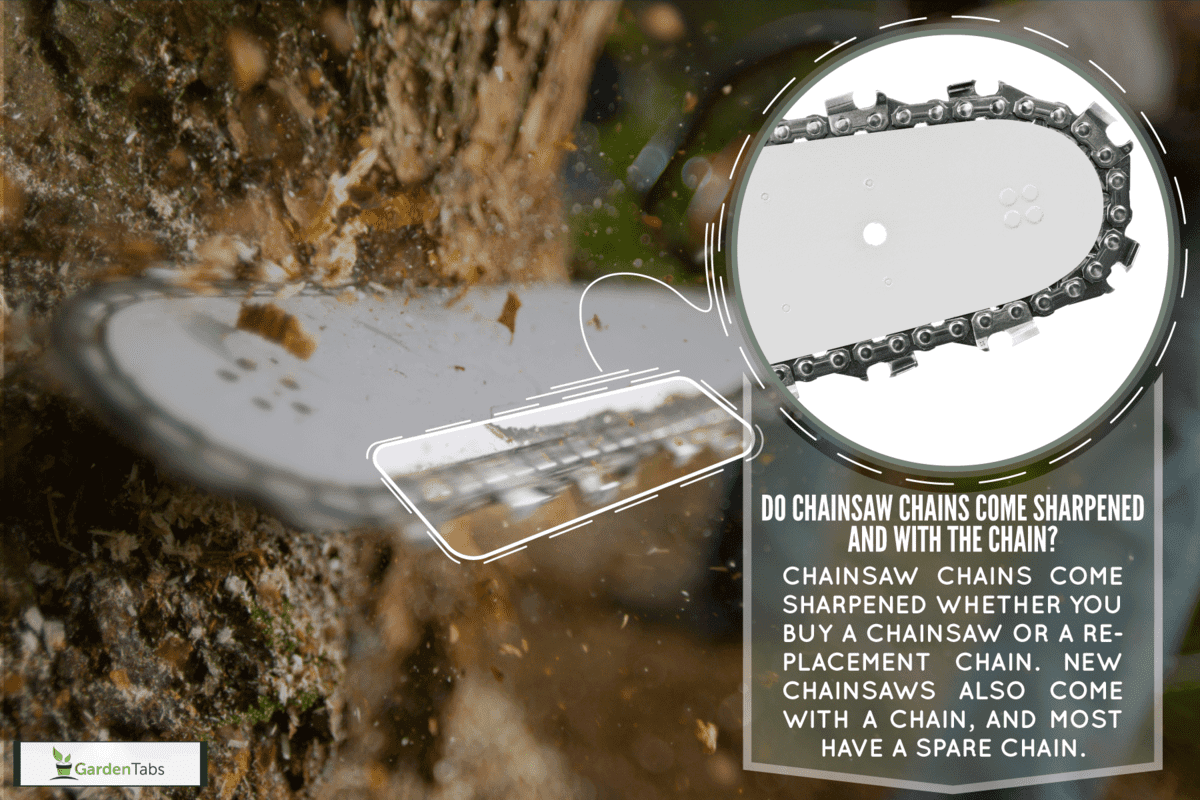
Chainsaws also always come with a chain when you buy them. Even cheap brands will have a pre-sharpened chain ready to go. Many chainsaws also come with a spare chain in case the first breaks.
The tension in a chainsaw's chain may change while in transit to the store. Before you start a chainsaw for the first time, it's vital to check that the chain is at the correct tension to avoid serious injury.
How Often Should You Sharpen A Chainsaw's Chain?

While many only sharpen their chainsaws weekly, it's a task that should be done much more often. A chainsaw's chain should be sharpened every time the chainsaw needs gas. Leaving a chainsaw chain unsharpened can lead to injury.
An unsharpened chain can have an irregular connection to its cutting surface. When a chainsaw's chain has an irregular connection, it can suddenly kick back and hurt you. One of the top causes of chainsaw injury is chainsaws suddenly kicking back because they needed sharpening.
As you use a chainsaw, small parts of the chain can become misaligned. Regularly sharpening your chainsaw's chain reduces the odds of an accident.
How Do You Sharpen A Chainsaw's Chain?
To sharpen a chainsaw chain, you need a chainsaw file. Chainsaw files come in a few different sizes. You will need to identify which size file your chainsaw chain needs.
You can find the correct file size needed by checking your chainsaw's owner's manual. The most common size files are 4mm, 4.8mm, and 5.5mm. If you need a chainsaw chain file, here are two of the best ones available on Amazon.
Chainsaw Chain Sharpening File
You can find this product here on Amazon.
Trilink Round Files
You can find this product here on Amazon.
Take your chainsaw and secure it so that the bar won't move. You can either secure it on a table or hold the chainsaw between your legs with the bar pointing away from you.
Each of the chainsaw chain's teeth alternate between left and right oriented. There will be a small line on each of the chainsaw chain's teeth to show the angle you should hold your file.
Choose between left- and right-oriented teeth, and begin sharpening all the teeth of that orientation before doing others.
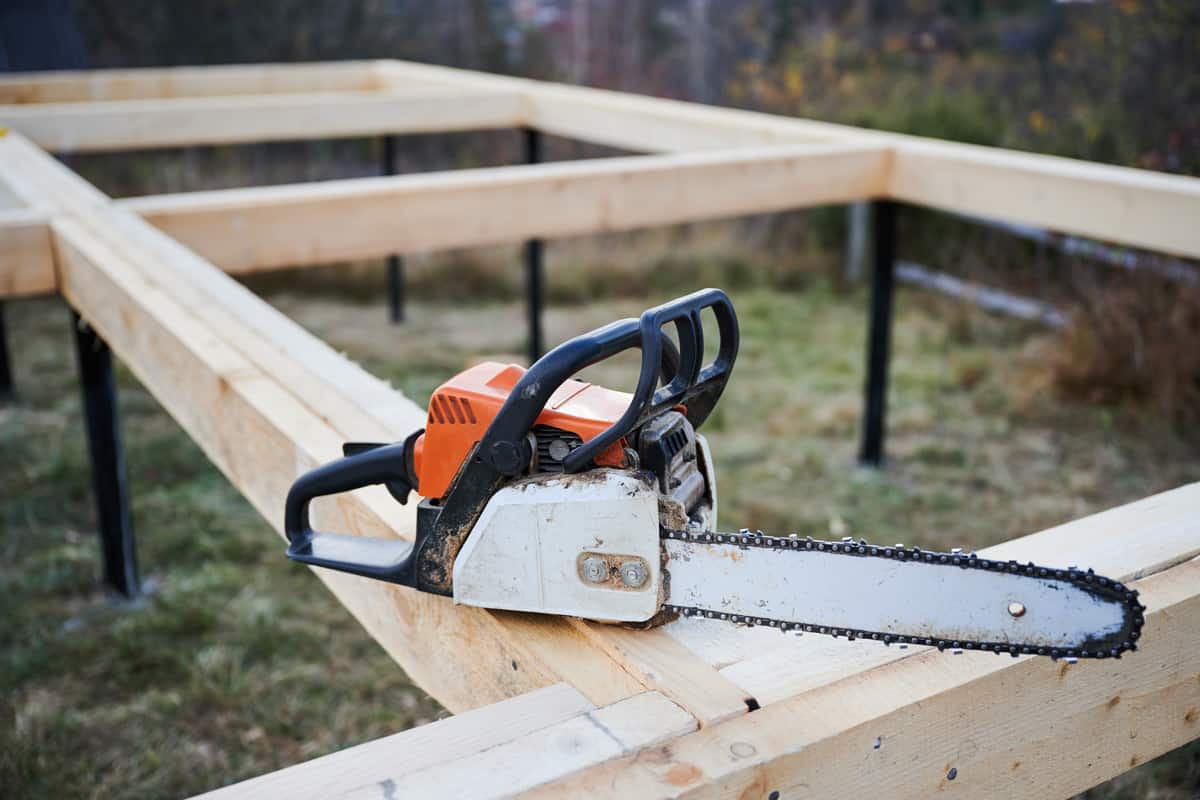
Sharpen a tooth by rubbing the length of the file along it in the same direction as the indication line on the tooth. You will need three to four full strokes to sharpen the tooth entirely. If you haven't sharpened the teeth in a while or have been cutting tough cuts, you may need as many as a dozen full strokes per tooth.
Why Do Chainsaws Need To Be Sharpened So Often?
Chainsaws need to be sharpened so often because for them to cut smoothly, they need all points of the chainsaw's chain to contact the cutting surface at the same height. When you sharpen a chainsaw chain, you file away some of its metal. As more metal is filed away, it changes the height of that tooth.
Since the teeth in a chainsaw blade angle outward, longer teeth are higher than other teeth and cut much deeper. If the teeth on a chainsaw are all at different heights, then when it cuts, it's likely to kick back.
When a chainsaw kicks back, it can cause the user to lose control and get injured. Chainsaws should be sharpened often because part of sharpening is ensuring that all teeth are filed to the same height.
How Do You Repair A Chainsaw Chain?
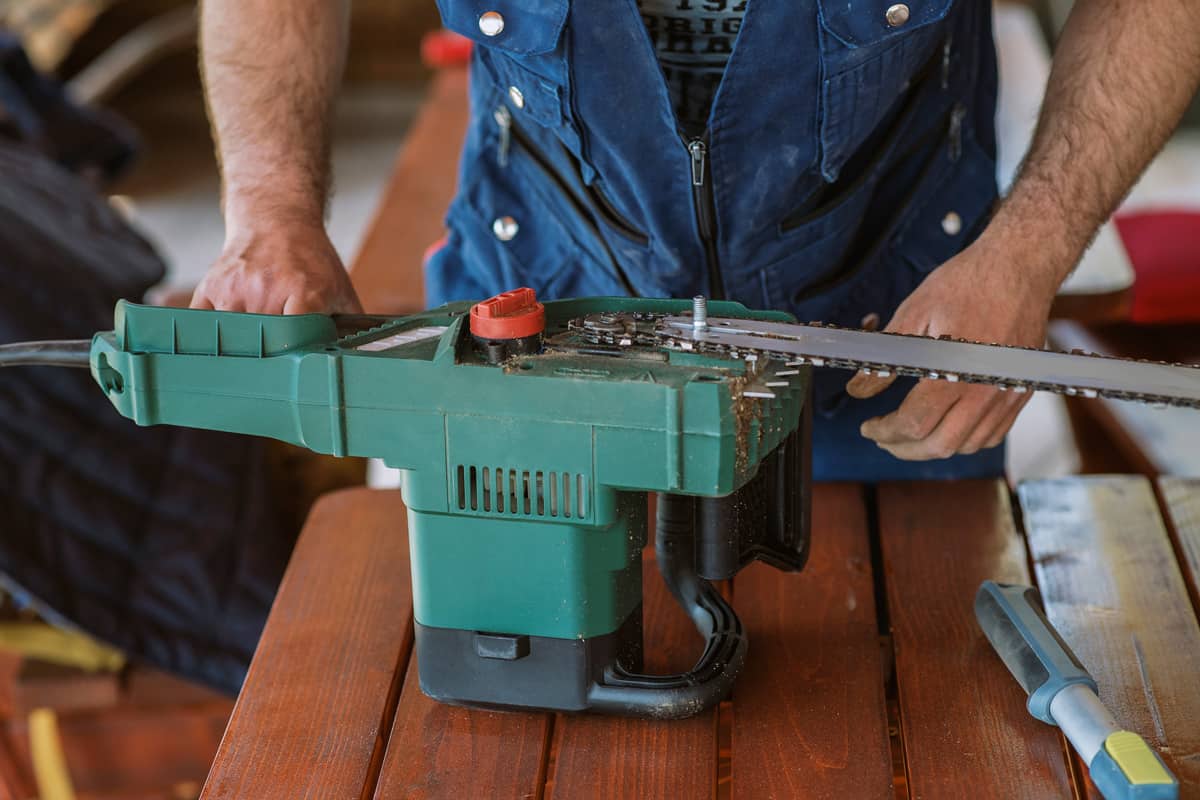
The first part of repairing a chainsaw chain is ensuring that it's a chain that can be fixed. Many brands of chainsaw chains recommend that they are replaced instead of repaired. If you have a chainsaw chain that you can repair, you will need to remove it from the chainsaw bar.
Some chainsaws may have a chain release, and others will have you remove a master link in the chain to remove it from the bar. Once the chain is removed from the bar, you can repair it.
Use a rivet punch to disconnect links of the chain that are damaged and replace them. Once you have repaired the damaged part of the chain, you can reattach it to the chainsaw bar.
If the chain's tension is not correct, you may need to add or remove a few links. Never operate a chainsaw with a chain at the incorrect tension.
If unsure about the correct tension while repairing your chainsaw, take it to a shop and have someone check. It is best to know that your chainsaw's tension is safe.
How Do You Use A Chainsaw To Cut Down A Tree?
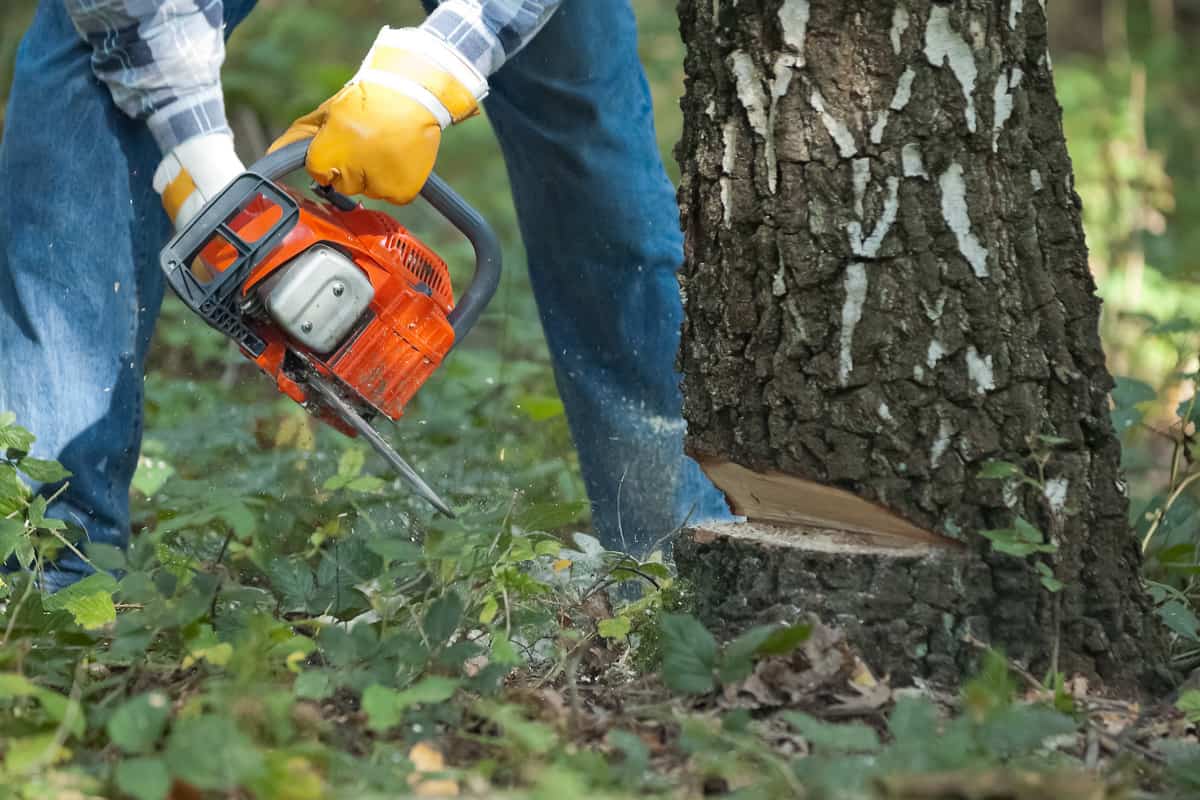
The first step to using a chainsaw is securing a power source. If your chainsaw uses a combustion engine, then fill it with gas. Electric chainsaws will need to be plugged in or have their batteries fully charged.
Next, start your chainsaw. If you have a gas chainsaw, you start it by pulling the cord. Often simply pulling the cord will not be enough to start it.
Start by priming your chainsaw. You can prime your chainsaw by pressing the prime bubble near the pull cord, and this will squeeze gas into the carburetor, ensuring an easier start.
Next, put your chainsaw on choke, allowing a greater amount of gas to flow into the engine. It will also flood the engine if left on, so turn it off once your chainsaw starts. Some chainsaws turn off choke automatically.
Now that you have the chainsaw in choke, pull the cord long and hard several times until you hear the engine turn over a few times. Hearing the engine turn over means that it's ready to start without choke. Turn off the choke and pull the cord until the engine start.
If you have an electric chainsaw, press the on button and hold down the safety handle. The chainsaw will automatically turn off if you fall and release the safety handle.
Now that the chainsaw is on, cut a deep cut in the tree's trunk on the side of the direction you want the tree to fall. The cut should be about six inches above the ground and sloped down in the direction you want the tree to fall about 10 to 15 degrees.
The deep cut should be between 20 and 25 percent of the tree's diameter. Now, on the other side of the tree, cut a second cut that approaches the first cut and sloped toward the direction you want the tree to fall.
The second cut should be three to six inches higher than the first cut to create a lip that makes the tree fall in the desired direction.
This method also allows you to cut on the side away from the direction of falling for the final cut, which makes it much safer to get away once the tree starts falling.
The chainsaw can also process the tree into smaller branches for removal. If you don't feel comfortable removing a tree yourself, hire professionals to avoid injury and damage to your property.
Final Thoughts
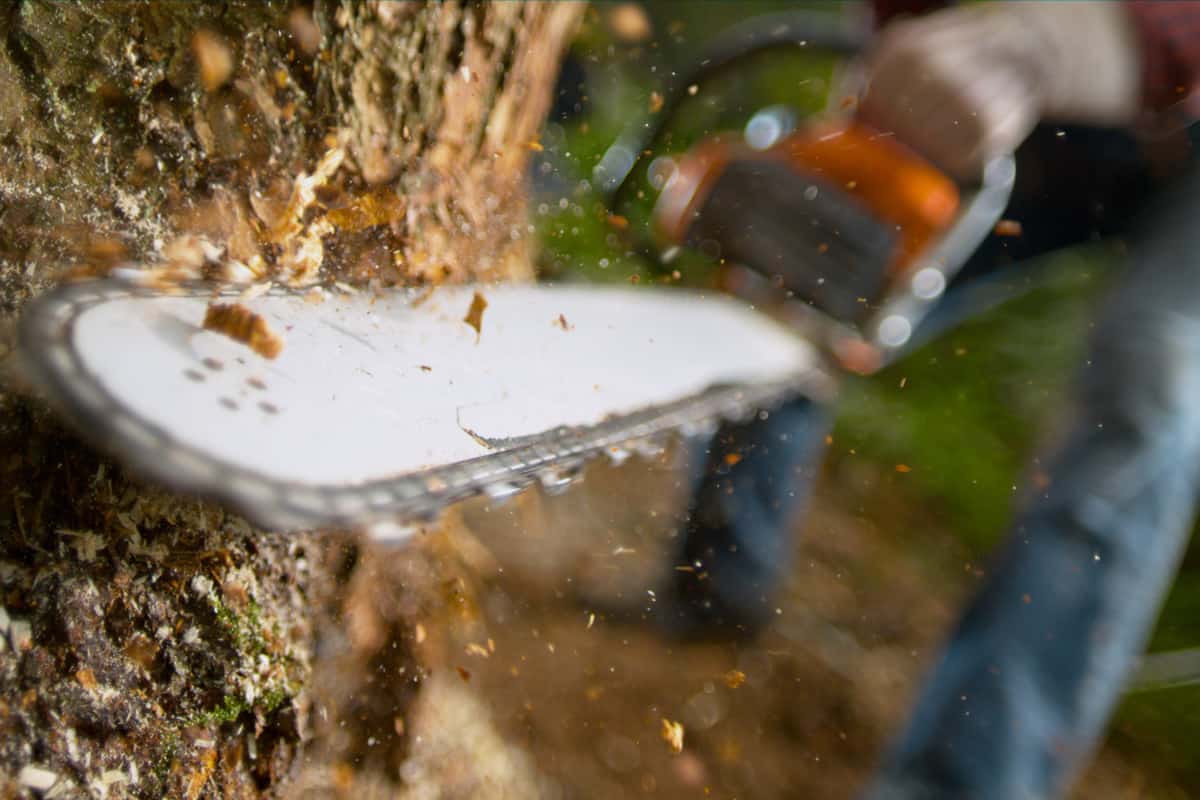
In this article, we learned that chainsaw chains come sharpened and with the blade. We also learned that chainsaw chains need constant sharpening to provide clean, safe cuts.
Remember, if a chainsaw chain isn't sharpened regularly, its teeth can become irregular in height and kick back and injure you.
We hope you enjoyed this article. If you want to learn more, check out some of these other posts:


